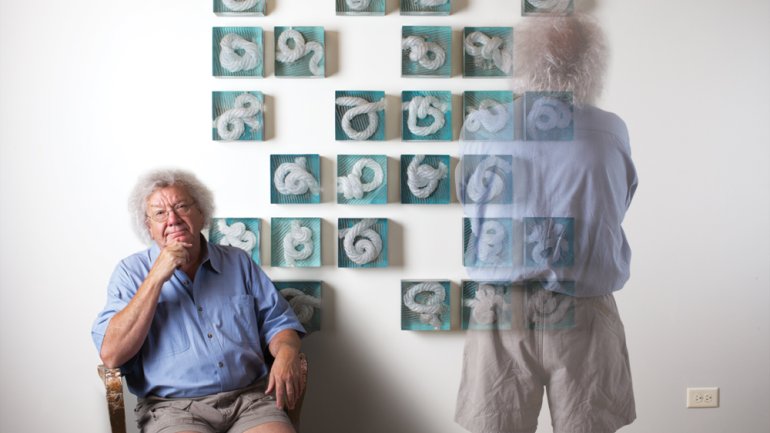Masters: William Carlson
Masters: William Carlson
It took four decades, but sculptor William Carlson is living his dream. For two years, he and his wife, artist Anne Shatas, have been nestled in the Berkshires in a home of their own design, enjoying the woods and life in an artists’ community.
Not that what came before wasn’t terrific. The energy of his students – first at the University of Illinois at Urbana-Champaign, where he taught for 27 years, and then at the University of Miami, where he spent nine – was “contagious,” he recalls; “it became a part of my work.”
Still, the joys of university life aside, being where he is now – retired from teaching, the kids grown, and focused on his own art – completes a picture he’s had in mind since his early 20s. “After grad school [at Alfred University], I was going to buy a little piece of land, I was going to build a cabin on it, I was going to be the country glass artist.”
Glass is still the foundation for his work. But for decades he has combined glass with other materials – clay, granite, metal, limestone – in work that is as shaped by architecture and engineering as it is by pure aesthetics.
Now, in his new home, he envisions a number of shifts in his work. He sees himself letting go to some degree. “I have been the one who takes control of materials and tries to give them voice. But I want to try to be a little less controlling and maybe a little bit more of a looker, an observer, an explorer.”
He sees himself collaborating with others and not insisting on doing everything in his own studio. “Before, I had this prejudice, this insecurity, that I had to have everything in my studio,” he says. Now, he’s come to believe, he doesn’t need every piece of equipment to accommodate every activity. “I can work with other people.”
He sees himself spending more time on reflection – “that kind of contemplation that allows you to think about things and do some drawing and not worry about the next exhibition.” Not that he’s uninterested in shows – “but I don’t want the next exhibition to determine what I do.”
Carlson says he was at his strongest as an object maker in the 1980s and ’90s. But in a different way, this is his time.

